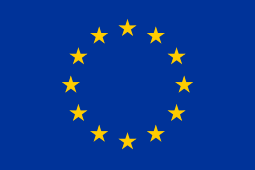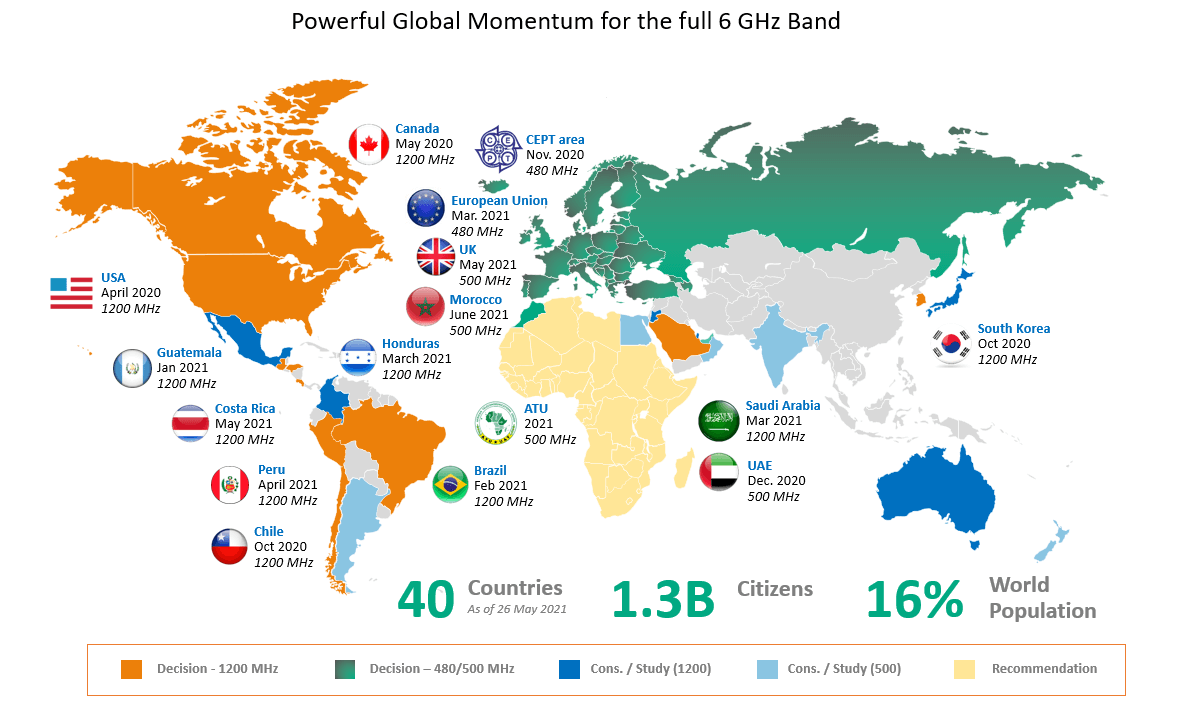
With the publication of its Implementing Decision C(2021) 4240 in the Official Journal of the European Union (OJEU), the European Commission today made an additional 480 MHz of spectrum in the 6 GHz band available for Wi-Fi[1]. EU Member States now have until 1st December 2021 to transpose the Decision into national law.
This Decision constitutes a major milestone for the European Union, as it almost doubles the total amount of spectrum available for Wi-Fi, paving the way for new and enhanced broadband applications and services that will benefit the 448 million citizens and 25 million enterprises in the EU-27 group of countries.
The force of Wi-Fi in the EU
With more than 13 billion devices in operation worldwide, Wi-Fi has become an essential element of Europeans’ everyday lives. On average, every European owns and uses multiple Wi-Fi devices. Over the last 20 years, Wi-Fi has evolved from a wireless network technology used by a few into the world’s most widely used wireless broadband technology. The economic value for the European Union that is generated by Wi-Fi is estimated to reach US$637 billion (€534 billion) in 2025[2].
The importance of Wi-Fi for society has been impressively demonstrated during the COVID-19 crisis. The pandemic dramatically increased the demand for Wi-Fi connectivity, due to the broad usage of teleworking, remote learning/home schooling, entertainment, and online commerce. A recent study indicates that the demand for Wi-Fi connectivity increased at an unprecedented rate, particularly in terms of Wi-Fi data consumption and number of actively used devices.[3] The vital importance of broadband connectivity for supporting EU recovery from COVID-19 was also identified by the European Commission In its State of the Union communication[4].
EC Decision marks a first step
This EC Decision is an important first step on the way towards a European Gigabit Society. However, to realize this goal and particularly the recently formulated objectives of the European 2030 Digital Decade, additional spectrum for Wi-Fi will be required.
During the next years, the amount of wireless data traffic is projected to grow substantially, fueled by new applications requiring very high data rates such as AR/VR but also by enhancements of current usages such as high-density deployments in large public venues.
Like for previous cellular communication generations (3G, 4G), the availability of high-speed Wi-Fi will be essential for enabling 5G by providing the offload capacity which will be urgently required, particularly in indoor environments. Europeans spend more than 90% of the day indoors, and consequently, more than 90% of traffic is and will be generated and consumed indoors[5]. The share of total traffic from mobile devices that is transferred over Wi-Fi is expected to increase from 59% for 4G to 71% for 5G[6].
Acknowledging these developments, a growing number of countries around the world have decided to allocate an additional 1200 MHz of spectrum to Wi-Fi, i.e. the entire 5925-7125 MHz band, others are in the process of doing so. (See global map below.)

1200 MHz of contiguous spectrum accommodate up to seven non-overlapping 160 MHz-wide channels which will enable Wi-Fi 6E to deliver maximum performance in dense deployment conditions. They will also support three non-overlapping 320 MHz-wide channels which will be featured by IEEE 802.11be (the future Wi-Fi 7). With just 480/500 MHz of spectrum, only one such channel can be realized.
In view of the ambitious targets of the European Digital Transformation and in the interest of global harmonization of the 6 GHz band for license-exempt use, the European Commission and national administrations should initiate the next step and evaluate the potential for WAS/RLAN operation in the 6425-7125 MHz band in a timely manner.
Sharing the 6GHz band
The 6 GHz band is currently used by a number of systems, including Fixed Wireless (FS) and Fixed Satellite Services (FSS), some of which require high levels of availability and reliability, as well as low latencies. Others are considered critical infrastructure. To share this band, a new entrant must comply with stringent protection requirements.
Unlike cellular technologies such as IMT 4G and 5G, Wi-Fi was designed to share spectrum with other users, and extensive studies conducted by the European Electronic Communications Committee (ECC) have shown that Wi-Fi can share the lower 6 GHz band with the incumbent services.
The incumbent services in the 6425-7125 MHz band are essentially the same as in the lower 6 GHz band, with the exception of Mobile Satellite Service (MSS) Earth Stations. Hence, it is expected that Wi-Fi could coexist with these incumbents under very much the same conditions as in the lower 6 GHz band. Of course, this would have to be validated through technical studies to be conducted by the ECC.
Considering that the 2023 World Radio Conference (WRC-23) will decide over a potential identification of the upper 6 GHz band for IMT in ITU Region 1 (Europe, Middle East, and Africa) and that IMT coexistence studies are in progress, understanding the various technical and regulatory options will be essential for European administrations to be able to make an informed decision about the best possible future use of the upper 6 GHz band in Europe.
European harmonization for 6GHz
A growing number of European administrations are acknowledging the importance of coexistence studies of WAS/RLAN operating in the 6425-7125 MHz band. At the recent Dynamic Spectrum Alliance Global Summit, the Czech Telecommunication Office (ČTÚ) expressed its support for such studies and a wider European harmonization, and the German Bundesnetzagentur (BNetzA) encouraged the RLAN industry to actively advocate additional studies.
HPE congratulates the European Commission for this landmark decision to open the 5925-6425 MHz range for license exempt services, including Wi-Fi. We look forward to continuing to work with policy makers and regulators in Europe as they study the best use of the 6425-7125 MHz range for European citizens and businesses, and we are confident that this analysis will show definitively that license exempt services can quickly and efficiently put this spectrum to intensive uses, while at the same time protecting incumbent operations.
What You Need to Know about 6 GHz
[1] The EC Decision is technology-neutral and opens the 5945-6425 MHz band for license-exempt use by Wireless Access Systems including Radio Local Area Networks (WAS/RLAN) in general. Wi-Fi is by far the most widely-deployed license-exempt WAS/RLAN technology.
[2] Wi-Fi Alliance: Global Economic Value of Wi-Fi® 2021 – 2025, February 2021
[3] See AirTies Wireless, The Catalyst Effect at https://airties.com/the-catalyst-effect?utm_source=wifi_now&utm_medium=article&utm_campaign=catalyst_effect_1020
[4] See Boosting Connectivity to support EU recovery, State of The Union, 2020 available at https://ec.europa.eu/digital-single-market/en/news/boosting-connectivity-support-eu-recovery
[5] BEREC and RSPG joint report on Facilitating mobile connectivity in “challenge areas”
[6] Cisco VNI Mobile, 2019




